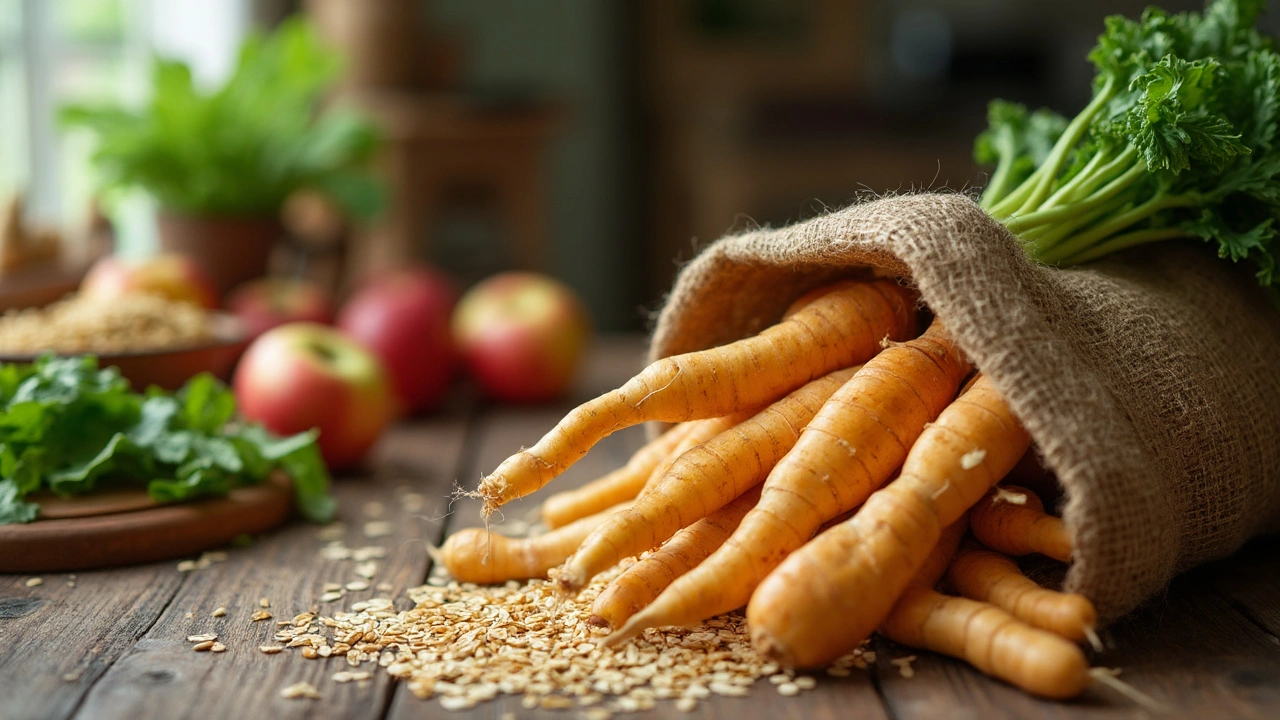Parsnip: Nutrition, Cooking Tips & Safety You Can Use
Parsnip is an everyday root vegetable that often gets overlooked. It looks like a pale carrot but brings a sweet, nutty flavor and a pile of useful nutrients to the table. If you want simple ways to cook it, how to store it, or whether it affects medications—this page gives clear, practical pointers.
How to pick, store and cook parsnips
Pick parsnips that are firm, smooth, and free of soft spots. Small to medium roots taste sweeter; large ones can be woody so peel and trim them well. Store unwashed parsnips in the fridge crisper in a perforated bag or wrapped in paper for up to one or two weeks. Cooked parsnip freezes well—blanch or mash, then freeze in portions.
Cooking tips that actually help: roast at a high temperature (about 200°C / 400°F) with a little oil, salt, and pepper for caramelized edges; mash cooked parsnips with butter and a splash of milk for a creamy side; add to soups or stews where their sweetness balances savory flavors. For a simple snack, slice thin, toss with olive oil and herbs, and bake until crisp.
Nutrients, benefits and who should be cautious
Parsnips give you fiber, vitamin C, folate, potassium and some vitamin K — all good things for a balanced diet. The fiber helps digestion and keeps you feeling full, while the potassium supports normal muscle and nerve function. But remember: parsnip is a starchy root, so it adds carbohydrates and natural sugars. If you track carbs for diabetes, count portions rather than eating freely.
Got allergies? If you react to celery, carrots, or mugwort, you might also react to parsnip. Oral allergy syndrome can cause itching or mild swelling in the mouth after eating raw parsnip; cooking usually stops that. If you have a serious food allergy, avoid it until you’ve checked with an allergist.
Taking medications? Foods rarely cause big drug problems, but there are a few things to watch for. Parsnips contain some vitamin K — not as much as leafy greens, but if you take warfarin (a blood thinner), keep your vitamin K intake consistent and talk to your clinician before changing how much you eat. If you’re on potassium-sparing medicines or have kidney disease, check with your doctor because parsnips add potassium to your diet. When in doubt, ask your pharmacist or prescriber; they’ll give advice tied to your medicines.
Final practical notes: try parsnip in smaller pieces to blend into dishes if you’re unsure about the flavor. Use it to swap in for potatoes in many recipes to add a different texture and a touch of sweetness. It’s a low-cost, versatile ingredient that makes weeknight meals more interesting without much fuss.

Parsnip: The Unsung Hero of Dietary Supplements You Need to Know About
Apr 23, 2025, Posted by Mike Clayton
Parsnip is often overlooked in the world of dietary supplements, but it packs a nutritional punch that rivals trendier options. Loaded with fiber, vitamins, and unique plant compounds, parsnip can strengthen immunity, boost gut health, and support healthy blood pressure. This article unpacks why this humble root deserves a prime spot in your routine. Plus, there are down-to-earth tips on how to sneak it into your meals and get the most from every bite. Discover how parsnip stands out from the supplement crowd.
MORESEARCH HERE
Categories
TAGS
- treatment
- online pharmacy
- dietary supplement
- side effects
- health
- dietary supplements
- health benefits
- online pharmacy Australia
- medication adherence
- medication safety
- thyroid disorders
- treatment option
- calcipotriol
- blood pressure
- erectile dysfunction
- closer look
- optimal health
- sexual health
- bacterial infections
- nutrition
